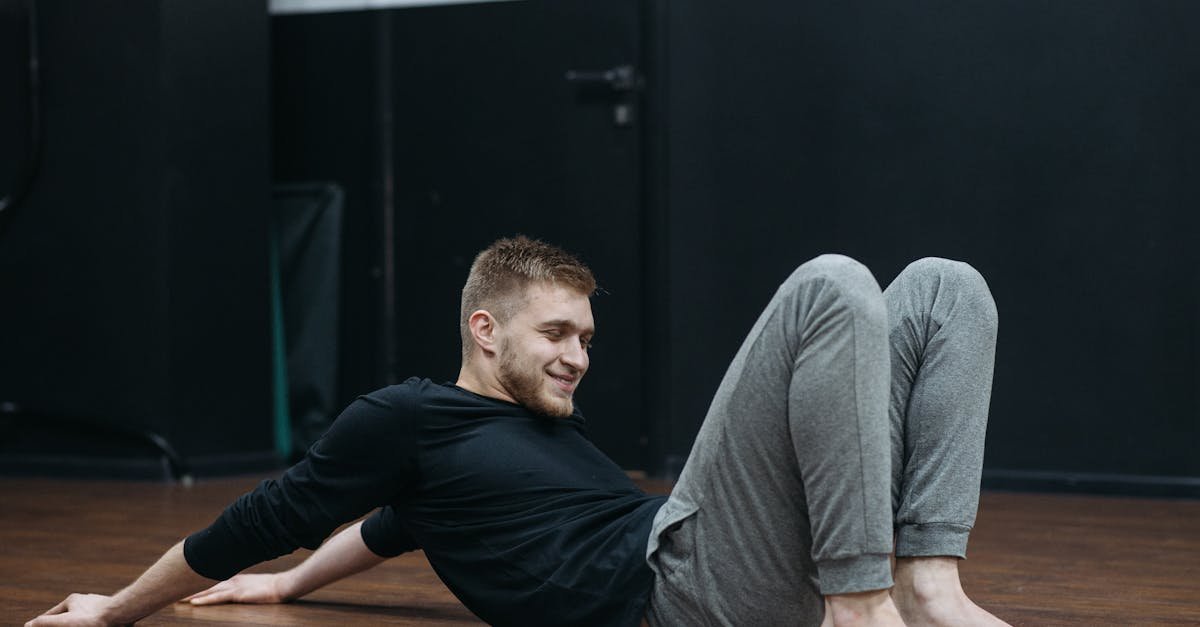Table of Contents
- Simple Meditation For Stress Relief Fitness: Your Ultimate Guide
- Feeling Overwhelmed? Why Stress is Sabotaging Your Fitness Goals
- What Exactly Is Meditation? (Hint: It’s Simpler Than You Think!)
- Getting Started: Simple Meditation Techniques Anyone Can Do
- Integrating Meditation into Your Fitness Routine
- Beyond the Basics: Elevating Your Meditation Practice
- The Bigger Picture: Meditation for Holistic Well-being
- Conclusion: Breathe In Calm, Breathe Out Stress
- Frequently Asked Questions (FAQs)
Simple Meditation For Stress Relief Fitness: Your Ultimate Guide
Let’s be real, life throws curveballs. Deadlines loom, traffic jams test our patience, and sometimes just getting through the day feels like running a marathon we didn’t sign up for. We juggle work, family, fitness goals, and try to squeeze in a social life. It’s a lot! And all this juggling often leads to one unwelcome guest: stress. You know the feeling – that tight knot in your stomach, the racing thoughts, the feeling of being constantly ‘on’. But what if I told you there’s a simple, accessible tool you can use anywhere, anytime to dial down that stress and actually boost your fitness journey? We’re talking about meditation. Forget needing fancy cushions or silent retreats; simple meditation techniques can be your secret weapon for stress relief and achieving peak fitness, both mental and physical.
Maybe you’ve heard about meditation, perhaps thought it was too ‘woo woo’ or required hours of sitting still like a statue. I get it. But stick with me, because we’re going to break down exactly how straightforward and incredibly powerful meditation can be, especially when you pair it with your commitment to fitness. This isn’t about achieving enlightenment overnight; it’s about giving yourself practical tools to navigate life’s chaos with a little more calm and focus. Ready to explore how a few minutes of quiet can make a world of difference to your workouts and overall well being? Let’s dive in.
Feeling Overwhelmed? Why Stress is Sabotaging Your Fitness Goals
You’re hitting the gym, watching your diet, trying to get enough sleep… but something still feels off. Maybe progress is slower than expected, or you just don’t have the energy or motivation you think you should. Sound familiar? The culprit might not be your workout plan or your protein intake; it could very well be chronic stress quietly undermining your efforts.
The Sneaky Connection Between Stress and Physical Health
Think of stress as your body’s ancient alarm system. Faced with a threat (like a saber toothed tiger back in the day, or an overflowing inbox today), your body floods with hormones designed for ‘fight or flight’. This is helpful in short bursts. But when the alarm is constantly blaring? That’s when problems start, impacting everything from your immune system to, yes, your fitness progress.
Cortisol: The Stress Hormone Explained
Meet cortisol, often dubbed the ‘stress hormone’. When you’re chronically stressed, your body produces too much of it. While cortisol has essential functions, persistently high levels are bad news for fitness enthusiasts. It can trigger cravings for sugary, fatty foods (hello, comfort eating!), encourage your body to store fat, particularly around the abdomen, and even break down muscle tissue. Essentially, cortisol can work directly against your goals of getting leaner and stronger. It’s like trying to build a house while a tiny demolition crew (led by cortisol) is constantly chipping away at the foundation.
How Stress Impacts Muscle Gain and Fat Loss
Beyond cortisol’s direct effects, chronic stress throws other systems out of whack. It can impair insulin sensitivity, making it harder for your body to use carbohydrates for energy, leading to more fat storage. It ramps up inflammation throughout the body, which not only contributes to various health issues but also hinders muscle recovery and growth after workouts. You put in the hard work lifting weights, but chronic stress slows down the repair process needed to actually build that muscle. It’s frustrating, right? You’re doing the ‘right’ things, but stress creates an internal environment that makes achieving results much harder.
Mental Roadblocks: Stress and Workout Motivation
Stress isn’t just physical; it’s a major mental drain. When you’re overwhelmed, summoning the energy and willpower to lace up your sneakers can feel impossible. Stress fogs your focus, making it harder to concentrate during workouts or stick to your nutrition plan. It can lead to feelings of fatigue, irritability, and even anxiety or depression, all of which kill motivation faster than you can say “rest day.” Think about it: how likely are you to push yourself through a tough set or choose a salad over pizza when your mind feels like a tangled mess of worries? Stress creates mental barriers that are just as significant as any physical limitation.
What Exactly Is Meditation? (Hint: It’s Simpler Than You Think!)
Okay, so we know stress is the villain. Now, let’s introduce the hero: meditation. When people hear “meditation,” images of monks chanting on mountaintops might spring to mind. While that is a form of meditation, the kind we’re talking about for stress relief and fitness is far more down to earth and accessible.
At its core, meditation is simply the practice of training your attention and awareness. It’s about learning to focus your mind, often on something specific like your breath, a sensation, or a sound, and gently bringing your attention back whenever it wanders (which it will – that’s totally normal!). It’s not about emptying your mind or stopping thoughts altogether; it’s about changing your relationship with your thoughts. Think of it like building a mental muscle. Just like lifting weights strengthens your biceps, meditation strengthens your ability to focus, stay present, and manage distracting or stressful thoughts without getting swept away by them.
Debunking Common Meditation Myths
Let’s clear up some common misconceptions, shall we?
- Myth 1: You need to sit in an uncomfortable pretzel pose. Nope! You can meditate sitting comfortably in a chair, lying down, or even walking. Comfort is key.
- Myth 2: You have to stop thinking completely. Impossible! The goal isn’t to silence your mind but to notice when it wanders and gently guide it back, without judgment.
- Myth 3: It takes hours a day to see benefits. Even 5-10 minutes of consistent practice can make a noticeable difference in stress levels and focus.
- Myth 4: It’s religious or spiritual. While meditation has roots in various spiritual traditions, the techniques themselves are secular practices focused on mental training and well being. You don’t need any specific beliefs to benefit.
- Myth 5: You’re “bad” at it if your mind wanders. Your mind is supposed to wander! The practice is in the noticing and returning. Every time you bring your focus back, you’re doing a rep for your mental muscle.
The Science Behind Calm: How Meditation Rewires Your Brain
This isn’t just feel good fluff; there’s solid science behind meditation’s effectiveness. Neuroimaging studies have shown that regular meditation practice can actually change the structure and function of your brain. How cool is that?
It can lead to:
- Reduced activity in the amygdala: This is the brain’s fear center, the part that triggers the stress response. Meditation helps calm this area down, making you less reactive to stressors.
- Increased density in the prefrontal cortex: This area is associated with awareness, concentration, and decision making. Meditation essentially strengthens your brain’s command center.
- Improved emotional regulation: By fostering awareness of your thoughts and feelings without immediate reaction, meditation helps you manage emotional responses more effectively.
- Lowered cortisol levels: Remember our stress hormone villain? Meditation helps reduce its production, counteracting its negative effects on fitness and health.
- Enhanced parasympathetic nervous system activity: This is the ‘rest and digest’ system, the opposite of ‘fight or flight’. Meditation helps shift your body into this calmer, restorative state.
So, meditation isn’t just about feeling calmer in the moment; it’s about actively training your brain and nervous system to be more resilient to stress over time. It’s like upgrading your internal operating system for better performance under pressure.
Getting Started: Simple Meditation Techniques Anyone Can Do
Alright, convinced that meditation might be worth a shot? Awesome! The best part is, you don’t need any special equipment or previous experience. Here are three simple techniques you can try today:
Technique 1: Mindful Breathing Meditation
This is the cornerstone of many meditation practices and incredibly effective for grounding yourself. Your breath is always with you, making it the perfect anchor for your attention.
Step-by-Step Guide to Mindful Breathing
- Find a comfortable position: Sit upright in a chair with your feet flat on the floor, or lie down comfortably. You can close your eyes gently or keep a soft, unfocused gaze downward.
- Tune into your breath: Simply bring your awareness to the physical sensation of breathing. Notice the air entering your nostrils, filling your lungs, the rise and fall of your chest or abdomen. Don’t try to change your breath; just observe it as it is.
- Be curious: Notice the temperature of the air, the subtle pause between inhale and exhale. Where do you feel the breath most vividly?
- Acknowledge wandering thoughts: Your mind will wander to thoughts, sounds, or sensations. That’s okay! When you notice this happening, gently acknowledge the distraction without judging yourself (“Ah, thinking”) and then softly redirect your attention back to the sensation of breathing.
- Start small: Aim for just 3-5 minutes to begin with. Use a timer if it helps. Consistency is more important than duration initially.
Think of your breath as home base. Whenever you get lost in thought, just gently return home.
Technique 2: Body Scan Meditation
This technique involves systematically bringing awareness to different parts of your body, noticing any sensations without judgment. It’s great for developing mindfulness and releasing physical tension you might not even realize you’re holding.
How to Perform a Body Scan
- Get comfortable: Lying down is often preferred for a body scan, but you can also do it seated. Close your eyes if you feel comfortable doing so.
- Start with the breath: Take a few moments to connect with your breath, just like in the mindful breathing exercise.
- Focus on your toes: Bring your awareness to the toes of your left foot. Notice any sensations – warmth, coolness, tingling, pressure, contact with your sock or the floor, or maybe nothing at all. Just observe without needing to change anything.
- Move slowly up the body: Gradually expand your awareness up your left foot, ankle, lower leg, knee, thigh, and hip. Spend some time noticing sensations in each area. Then repeat with the right leg, from toes to hip.
- Scan the torso: Move your attention through your pelvis, abdomen, lower back, chest, and upper back. Notice the subtle movements with each breath.
- Scan the arms: Bring awareness to the fingers of your left hand, moving up the hand, wrist, forearm, elbow, upper arm, and shoulder. Repeat on the right side.
- Scan the neck and head: Focus on your neck, throat, jaw (often a place we hold tension!), face, scalp, and the very top of your head.
- Broaden awareness: Finally, hold your entire body in awareness, feeling the wholeness of it and the flow of breath within it.
- Finish gently: When you’re ready, wiggle your fingers and toes, perhaps take a gentle stretch, and slowly open your eyes.
A full body scan can take 20-30 minutes, but you can do shorter versions focusing just on areas of tension or simply scanning more quickly. It’s a fantastic way to reconnect with your physical self.
Technique 3: Walking Meditation (Fitness Fusion!)
Who says meditation has to be still? Walking meditation blends mindful awareness with gentle movement, making it a perfect fit for fitness lovers or those who find sitting still challenging.
Here’s how:
- Find a space: You can do this indoors or outdoors, anywhere you can walk back and forth or in a loop without too many distractions. A short hallway or a quiet path works well.
- Start standing: Take a moment to feel your feet on the ground. Notice your posture. Take a few conscious breaths.
- Begin walking slowly: Walk at a pace slower than your usual stride. Bring your awareness to the sensation of walking.
- Focus on sensations: Pay attention to the lifting of one foot, the movement through the air, the placement of the foot back on the ground, the shifting of weight. Notice the contact of your feet with the surface beneath them.
- Coordinate with breath (optional): You might try coordinating your breath with your steps, perhaps inhaling for three steps and exhaling for three steps, or whatever feels natural.
- Observe your surroundings (if outdoors): Notice sights, sounds, and smells without getting lost in thought about them. Just acknowledge their presence.
- Handle distractions: As always, when your mind wanders, gently guide it back to the physical sensations of walking.
Walking meditation can be a great cool down after a workout or a mindful break during a busy day. It proves that mindfulness can be woven into everyday activities.
Integrating Meditation into Your Fitness Routine
Okay, you’ve got some simple techniques under your belt. Now, how do we weave this magic into your existing fitness life? The beauty is that meditation can complement your physical training beautifully, acting as both a warm up for the mind and a cool down for the nervous system.
Pre-Workout Calm: Setting the Stage for Success
Ever rush into a workout feeling scattered, stressed from work, or mentally elsewhere? Taking just 3-5 minutes before you start exercising to practice mindful breathing can make a huge difference. Think of it as mental preparation.
Doing this helps to:
- Center your focus: Transition from the chaos of your day to the task at hand – your workout.
- Reduce pre workout anxiety: Calm those jitters or feelings of overwhelm about the session ahead.
- Enhance mind muscle connection: Being more present allows you to better focus on the muscles you’re working, potentially leading to more effective training.
- Set a positive intention: Use the quiet moment to remind yourself why you’re working out – for health, strength, stress relief, etc.
You don’t need a long session. Simply sit quietly in your car before entering the gym, or find a quiet corner, close your eyes, and focus on 10-20 slow, mindful breaths. Notice the shift from frazzled to focused.
Post-Workout Recovery: Enhancing Rest and Repair
Your workout is done, muscles are tired, endorphins might be flowing. This is a prime time to leverage meditation for enhanced recovery. Instead of immediately grabbing your phone or rushing off to the next thing, take 5-10 minutes for a body scan or some more mindful breathing.
Post workout meditation helps:
- Activate the parasympathetic nervous system: This shifts your body out of the ‘stress’ state of exercise and into the ‘rest and digest’ mode crucial for recovery and muscle repair.
- Reduce muscle tension: A body scan can help you consciously relax areas that feel tight or sore after training.
- Lower cortisol levels: Intense exercise temporarily raises cortisol; meditation helps bring it back down more quickly.
- Promote mental relaxation: It helps you wind down mentally after the physical exertion, leading to a greater sense of overall well being.
- Improve sleep quality: By calming the nervous system, post workout meditation can contribute to better sleep later on, which is absolutely vital for fitness progress.
Consider adding a short meditation session to your cool down and stretching routine. It’s like giving your nervous system a much needed sigh of relief after hard work.
Beyond the Basics: Elevating Your Meditation Practice
Like any skill, whether it’s lifting weights or learning an instrument, the benefits of meditation grow with consistency and a little bit of exploration. Once you’re comfortable with the basic techniques, here’s how to deepen your practice.
Consistency is Key: Building a Sustainable Habit
Doing a 30 minute meditation once a month is less effective than practicing for 5-10 minutes most days. Consistency is what truly rewires the brain and builds stress resilience. How do you make it stick?
- Link it to an existing habit: Meditate for 5 minutes right after brushing your teeth, before your morning coffee, or immediately post workout. Piggybacking onto something you already do makes it easier to remember.
- Start small and achievable: Don’t aim for an hour a day right away. Start with 3-5 minutes. Once that feels easy, gradually increase the duration if you wish. Success breeds motivation.
- Don’t strive for perfection: Some days your mind will feel like a circus. Other days will feel calmer. It doesn’t matter. Just showing up and doing the practice is the win. Let go of expectations.
- Schedule it (loosely): Having a general time you aim to practice (e.g., first thing in the morning, during your lunch break) can help build routine.
- Be kind to yourself: If you miss a day, don’t beat yourself up. Just gently return to the practice the next day.
Treat it like any other important appointment – an appointment with yourself for greater calm and focus.
Finding Your Sweet Spot: Duration and Frequency
So, how long and how often should you meditate? There’s no single right answer, as it depends on your goals, schedule, and personal preference. However, here are some general guidelines:
- Frequency: Aim for daily practice if possible, even if it’s short. 5-6 days a week is fantastic. Consistency trumps duration.
- Duration: Start with 3-5 minutes. Many people find 10-20 minutes daily to be a sweet spot for noticeable benefits without feeling overwhelming. Some experienced practitioners meditate for longer, but it’s not necessary for stress relief and fitness benefits.
- Listen to your body and mind: Some days you might only have energy for 2 minutes. Other days you might feel drawn to sit longer. Be flexible.
- Experiment: Try different times of day to see what works best for you. Morning can set a calm tone, midday can reset focus, and evening can aid relaxation before sleep.
Ultimately, the best meditation routine is the one you can consistently stick with. Find what feels sustainable and beneficial for you.
The Bigger Picture: Meditation for Holistic Well-being
While we’ve focused on the potent combination of meditation for stress relief and fitness, its benefits ripple outwards, touching nearly every aspect of your life. Think of it less as just another task on your to do list, and more as an investment in your overall operating system – your mind.
Regular meditation practice doesn’t just make you calmer during your 10 minute session; it starts to change how you interact with the world. You might find yourself becoming less reactive in stressful situations – that annoying email or traffic jam doesn’t derail your entire day quite so easily. You might notice improved focus and concentration not just in the gym, but also at work or during conversations. Your sleep may improve, leading to more energy and vitality. Relationships can benefit too, as increased self awareness and emotional regulation often lead to better communication and empathy.
Integrating meditation alongside your physical fitness routine creates a truly holistic approach to health. You’re tending not just to your body’s strength and endurance, but also to your mind’s resilience, focus, and peace. It acknowledges that mental fitness and physical fitness are deeply intertwined. You can have the strongest body in the world, but if your mind is constantly stressed and chaotic, are you truly well? Meditation helps bridge that gap, fostering a sense of balance and inner strength that supports every other endeavor, including crushing your fitness goals.
Conclusion: Breathe In Calm, Breathe Out Stress
So, there you have it. Meditation isn’t some mystical practice reserved for gurus; it’s a practical, science backed tool for managing stress, enhancing focus, and ultimately, boosting your fitness journey. By incorporating simple techniques like mindful breathing, body scans, or even walking meditation into your routine – perhaps just for a few minutes before or after your workouts – you’re not just calming your mind in the moment. You’re actively training your brain to be more resilient, less reactive to stress, and better equipped to support your physical goals.
Remember, consistency beats intensity. Start small, be patient with yourself, and notice the subtle shifts. Less knee jerk reactions to daily hassles? Better focus during your lifts? Easier time winding down after a long day? These are the real world benefits. By pairing the discipline of physical fitness with the awareness of meditation, you unlock a powerful synergy for holistic well being. So take a deep breath, maybe try a 3 minute meditation right now, and start integrating this simple practice into your life. Your mind, your body, and your fitness goals will thank you.
Frequently Asked Questions (FAQs)
1. I tried meditation and my mind wouldn’t stop thinking! Am I doing it wrong?
Absolutely not! This is the most common experience. Meditation isn’t about stopping thoughts; it’s about noticing when you’re thinking and gently returning your focus (e.g., to your breath) without judgment. Every time you notice your mind wandering and bring it back, that *is* the practice. Think of it as a mental push up!
2. How soon can I expect to feel the benefits of meditation for stress and fitness?
Some people feel a sense of calm immediately after their first session. More profound changes, like reduced overall stress reactivity and improved focus, tend to build gradually with consistent practice. Many people report noticing subtle shifts within a couple of weeks of daily 5-10 minute sessions. Like fitness, results compound over time.
3. Can I meditate while listening to music or guided tracks?
Yes! Guided meditations (using apps or online videos) are excellent for beginners, as they provide structure and instruction. Calming, ambient music (without lyrics) can also be helpful for some, though traditional practice often emphasizes silence or natural sounds to cultivate internal awareness. Experiment and see what works best for you.
4. Is there a ‘best’ time of day to meditate for fitness benefits?
The “best” time is whenever you can consistently do it. Morning meditation can set a calm, focused tone for the day and your workout. Pre workout meditation helps transition mentally. Post workout meditation aids recovery and nervous system cool down. Evening meditation can promote relaxation and better sleep (vital for fitness). Try different times and see what fits your lifestyle and goals.
5. Can meditation replace therapy or medical treatment for severe stress or anxiety?
No. While meditation is a powerful tool for stress management and promoting well being, it is not a substitute for professional medical or psychological help. If you are struggling with severe stress, anxiety, depression, or other mental health concerns, please consult a qualified healthcare professional or therapist. Meditation can be a valuable complementary practice alongside professional treatment.










